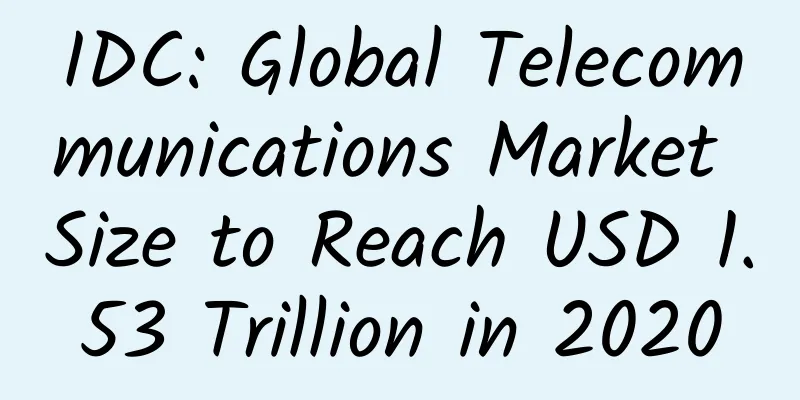IPv4 and IPv6: Is the Internet Facing a Split?

|
The Internet is facing a technological split, and we are entering a future that contains two sets of Internet protocols: IPv4 and IPv6. "Many players in the Internet Service Provider space recognize the problem and the urgency of action." According to new research from the Georgia Institute of Technology's Internet Governance Project, IPv6 adoption is growing at a slow pace around the world: "Of the 215 economies measured, only 26 (12%) had steadily increasing IPv6 capacity over the three-year study period." They found that currently there is little incentive for small enterprise networks to move to the new protocol because they do not need to grow at the same rate as larger enterprises, and they will remain so for years to come: "Adopting the IPv4-related software and hardware ecosystem." IPv4 addresses are running out Essentially, the Internet Protocol consists of a header and a payload. The header is the source IP address, while the payload is the data being sent. All IP addresses assigned to networks, computers, and individual IoT devices are assigned through the Internet Protocol. The problem is that IPv4 creates only 4,294,967,296 (4.2 billion) IP addresses based on a 32-bit base. As the Internet matures, expands, and incorporates devices such as the Internet of Things, it will need more addresses than the 4.2 billion IPv4 can provide. This is a problem we have solved with IPv6, which is 128 bits and is capable of creating many more IP addresses than IPv4. 340,282,366,920,938,463,463,374,607,431,768,211,456 (340 trillion) addresses to be exact. IPv6 is capable of assigning an IP address to every grain of sand on Earth. IPv4 vs. IPv6: Companies are hesitant to decide Enterprises have been slow to migrate to IPv6 for several reasons, such as the fact that there is not really a need for a large number of new IPs; the deployment cost of upgrading to IPv6 is also a consideration. Regarding the cost issue, the problem is not getting IPv6, because they are cheap and obviously abundant, but the investment required to launch and maintain them. The IGP study also found that there is a strong market for used IP addresses, with the cost of an IPv4 address ranging from $8.00 in 2014 to $17.00 in 2018. Organizations that retain used IPv4 addresses have an increasing incentive to sell them, alleviating scarcity issues that could drive IPv6 adoption. “Many players in the ISP sector are aware of the problem and the urgency to act,” said James Karimi, senior vice president of engineering at GTT. “However, as long as there are technical means to overcome IPv4 addressing deficiencies, such as creating a gateway with a shared IPv4 for multiple connected machines, and there are no regulatory requirements to switch to IPv6, the migration to IPv6 will be slowed down.” “Besides increasing the number of available IP addresses, there are other benefits to moving to IPv6. IPv6 simplifies some network layer functions, such as routing and mobility, and provides better security options through better thought engineering and more adaptable IPsec protocol management. Since there is virtually no end to the number of available addresses, IPv6 is more efficient than IPv4 for video transmission, and can simplify internal addressing in high-performance computing centers. The benefits of mobile and IoT devices are clear Enterprises that are deploying mobile internet services or IoT devices are choosing IPv6 and are slowly moving traffic away from the now older IPv4 protocol internet. A major problem is that IPv6-only and IPv4-only hosts cannot communicate with each other without an intermediate gateway. Wicus Ross, security researcher at SDLabs, told us: “IPv4 network deployments relied heavily on perimeter security protection and NAT private networks. IPv6 network implementations are very different from this, almost forcing organizations to consider a zero-trust network deployment architecture, which is a big mindset shift. It almost feels as if the lack of zero-trust network adoption is the reason for the low adoption of IPv6.” Security is a major concern for the enterprise of the future, not just in terms of technology, but also in terms of the messy ecosystem that two competing protocols could create. Companies are already trying to manage hybrid cloud infrastructures and many other hybrid services. Poor organization and misconfiguration are growing threats facing IT departments. |
>>: The content road for operators may not be smooth
Recommend
In order to "force" users to switch to 5G, operators have come up with new moves?
[[422740]] Recently, the voice of "forcing&q...
The US 5G goal is "cold"! No one expected that the "ban" would slap itself in the face
Last year, the iPhone 12 was launched. The most o...
Huawei launches MAE-Litem, the world's first integrated converged website for wireless, transmission, and core networks, making digital transformation in the industry a breeze
Recently, the 16th International Coal Expo was he...
git clone network speed is too slow, what to do, teach you how to solve
How to speed up git clone Do you often use git to...
New data momentum - Fanruan’s 4th Smart Data Conference concluded successfully!
From November 25th to 27th, Fanruan's 4th Sma...
Why does TCP need a three-way handshake?
[[285361]] First, let's briefly introduce the...
Why some cities are reluctant to adopt 5G
Most of the discussion about 5G has centered arou...
ProfitServer has opened 4 new data centers in Hong Kong, starting from $5.77 per month for 100M unlimited traffic
ProfitServer sent a new email a few days ago, say...
The Secret of Online Physical Examination Technology (Part 1)
1. Necessity of online physical examination In da...
Asia Cloud: CN2 GIA cloud servers in the United States/Japan/Hong Kong starting from 24 yuan/month, with optional data centers in Shenzhen/Guangzhou/Fuzhou/Shiyan, etc.
AsiaYun is a domestic business founded in 2018. I...
IT presents a new normal in the post-epidemic era. 7 "prescriptions" can help you cure the "sequelae"
In early 2020, the coronavirus pandemic hit IT li...
10 common data center operation and maintenance errors that can cause panic
Some common sense mistakes can reduce the data ce...
Moderately advance the high-quality development of 5G
This year's "Government Work Report"...
The social app that once had 500 million users is about to be shut down
Author: Lu Yao Proofread by Yun Zhao Not long ago...
China Mobile may withdraw all 3G networks by 2020, but terminals still need to support GSM
At the Global Terminal Summit held recently, Chin...







![[6.18] UFOVPS 20% off, top up 200 yuan and get 10 yuan, US CN2/Japan CN2 GIA/Hong Kong CN2 GIA optional](/upload/images/67cabe6b63f72.webp)

